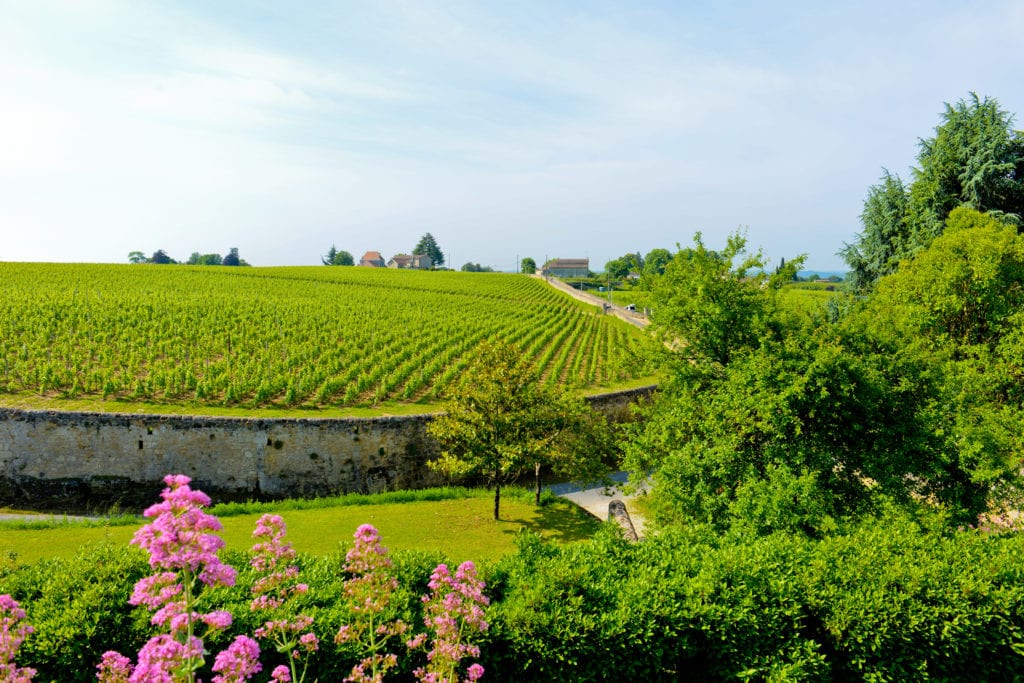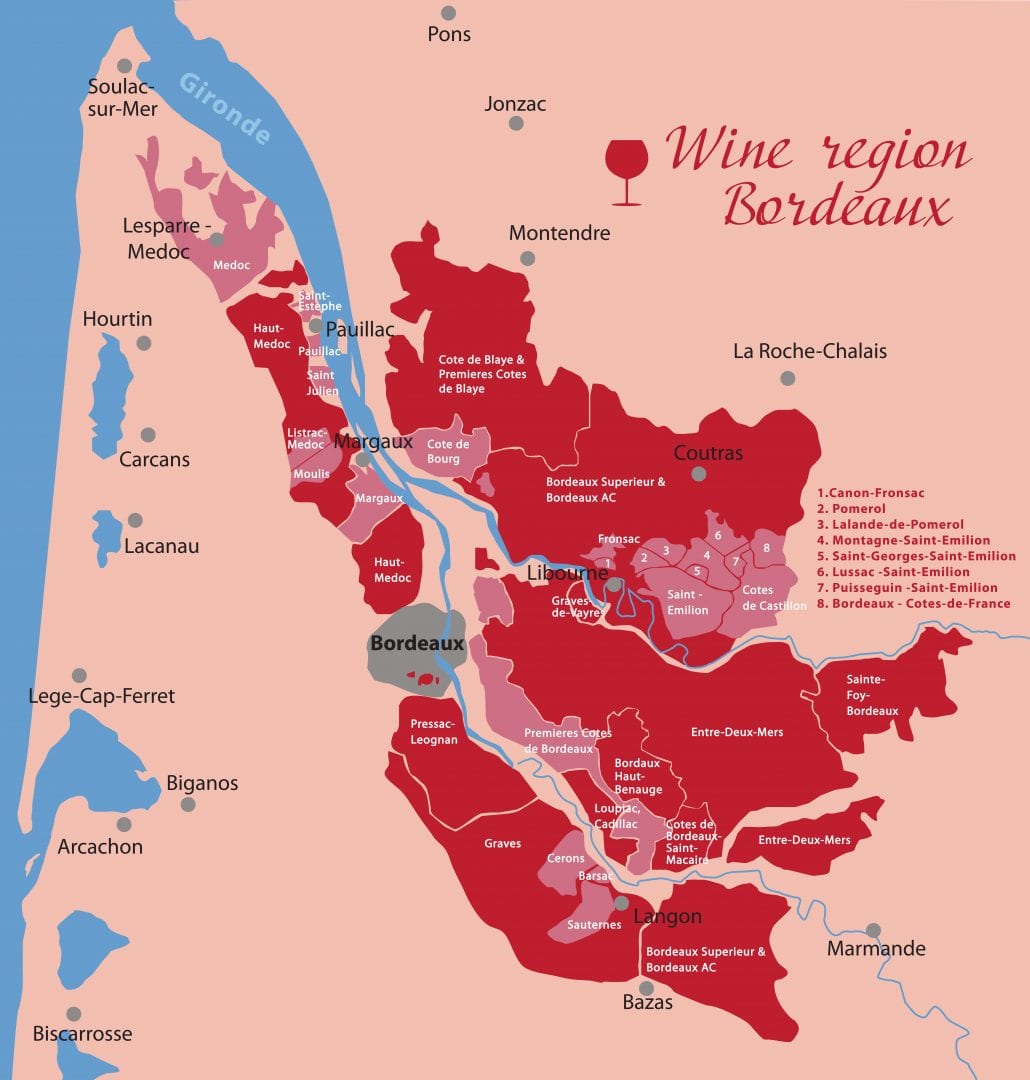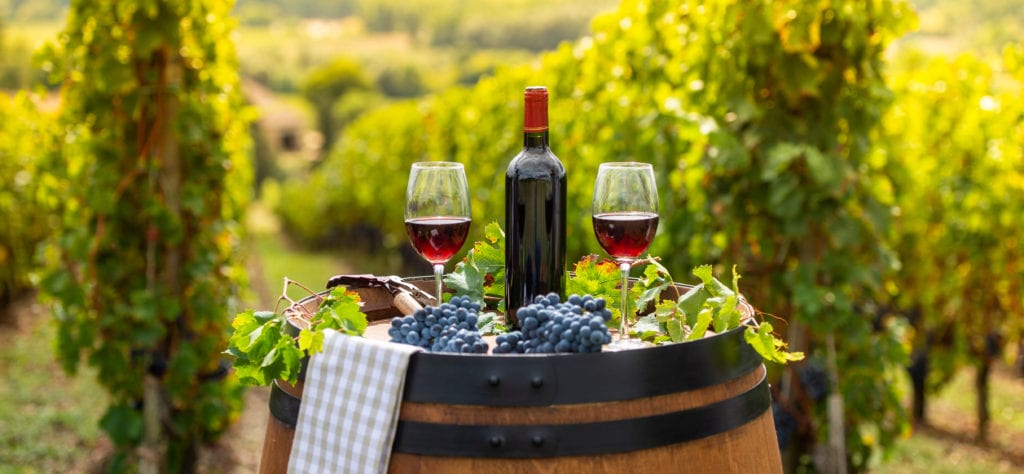The Classic Home of Merlot and Cabernet Sauvignon
Merlot and Cabernet Sauvignon are often grown together and blended. In the case of Bordeaux with the further partnering of some Cabernet Franc. Merlot is added to Cabernet Sauvignon to supply softness and body adding a certain smoothness or elegance, whilst Cabernet Sauvignon is blended with Merlot to add acidity, tannin, colour and aromatic fruit. Tannin is one of the ingredients that allow a wine to age, rendering a young wine as stiff, sappy in the mouth and often requires some time to soften and mellow. Tannin occurs naturally from the grape skins but can often be added by ageing in oak casks for best harvests in the quest to allow a big wine age well in order to yield a top Cru Classé that is worthy of laying down and cellaring for best maturity.

Bordeaux’s classic region for such blends is situated around the Gironde estuary where the Garonne and Dordogne rivers meet. The area has a moderate, maritime climate with long and warm autumns that provide ideal conditions for Cabernet Sauvignon and Merlot.
Six grape varieties, three red and three white are predominantly used in wine making in Bordeaux. Out of the three reds, Merlot accounts for 66%, Cabernet Sauvignon 22.5% and Cabernet Franc 9.5%. Merlot is the dominant grape variety in north and east of the Gironde and Dordogne, area known as the Right Bank, a major production zone for premium quality wines, typically Saint-Emilion and Pomerol. The best vineyards are planted on clay and limestone soils which regulates the amount of water and nutrients going to the vine. Merlot grapes, being early ripening benefit greatly from this type of soil. Therefore, the wines are of medium acidity and tannins, medium to high body and alcohol and have a red fruit characteristic (plum, red berry), developing cedar and tobacco notes as they age.
Other satellites of Saint-Emilion and Pomerol would include: Cotes de Castillon, Montagne-Saint-Emilion, Lussac-Saint-Emilion Puisseguin-Saint-Emilion Saint-Geores-Saint Emilion Lalande de Pomerol.

The area West and South of the Gironde and Garonne is known as the Left Bank, the dominating grape variety here is Cabernet Sauvignon. The best plots are grown on gravel mounds that serve as drainage system and retains heat to help with ripening. The wines produced here are medium or full bodied, deeply coloured with high level of tannins and acidity, pronounced aromas of black fruit and medium alcohol. These wines are often aged in oak barrels to soften the tannins and develop complex aromas of cedar, tobacco and coffee. The main appellations in the Left Bank are Médoc, Haut – Médoc (including Pauillac and Margaux communes) and Graves (including commune Pessac-Leognan). Which boasts Chateau Haut Brion, Chateau Smith Haut Lafitte, Couhins Lurton and the Irish owned Chateau de Fieuzal.
Outside of the most prestigious appellations mentioned above, you can still find many Bordeaux wines, these are simply labelled as Bordeaux AC or Bordeaux Supérieur AC. The wines here are medium bodied, medium acidity and tannin and a mixture of red and black fruit flavours. Generally, these wines are best consumed significantly younger.

With classifications it should never be forgotten that beauty is on the palate of the beholder and that enjoyment and price are also interlinked. Some of the classifications have elevated pricing to that of a rare commodity and therefore rule out relaxed and casual enjoyment, let alone repeating the experience. When we think of our colleagues in the vineyard and cellars who toil to provide us with their artisanal vinous product, their concept is that they produce, with great skill and passion ultimately for sharing.
When enjoying a wine, please always try to remember the people in the vineyard and the cellars who nobly dirty their hands in order to please us with their sensorial product of high quality fashioned from their all year-round work, skill and passion.
“Fruit of the vine and work of human hands”
Epitomising the sense of rural farming working close with the gifts of nature and the expression of human skills.
By Gregory Alken

Reference: https://en.wikipedia.org/wiki/Bordeaux_wine_regions; https://www.crus-bourgeois.com/en/; https://winefolly.com/tips/superieur-cheap-bordeaux-wine/;
